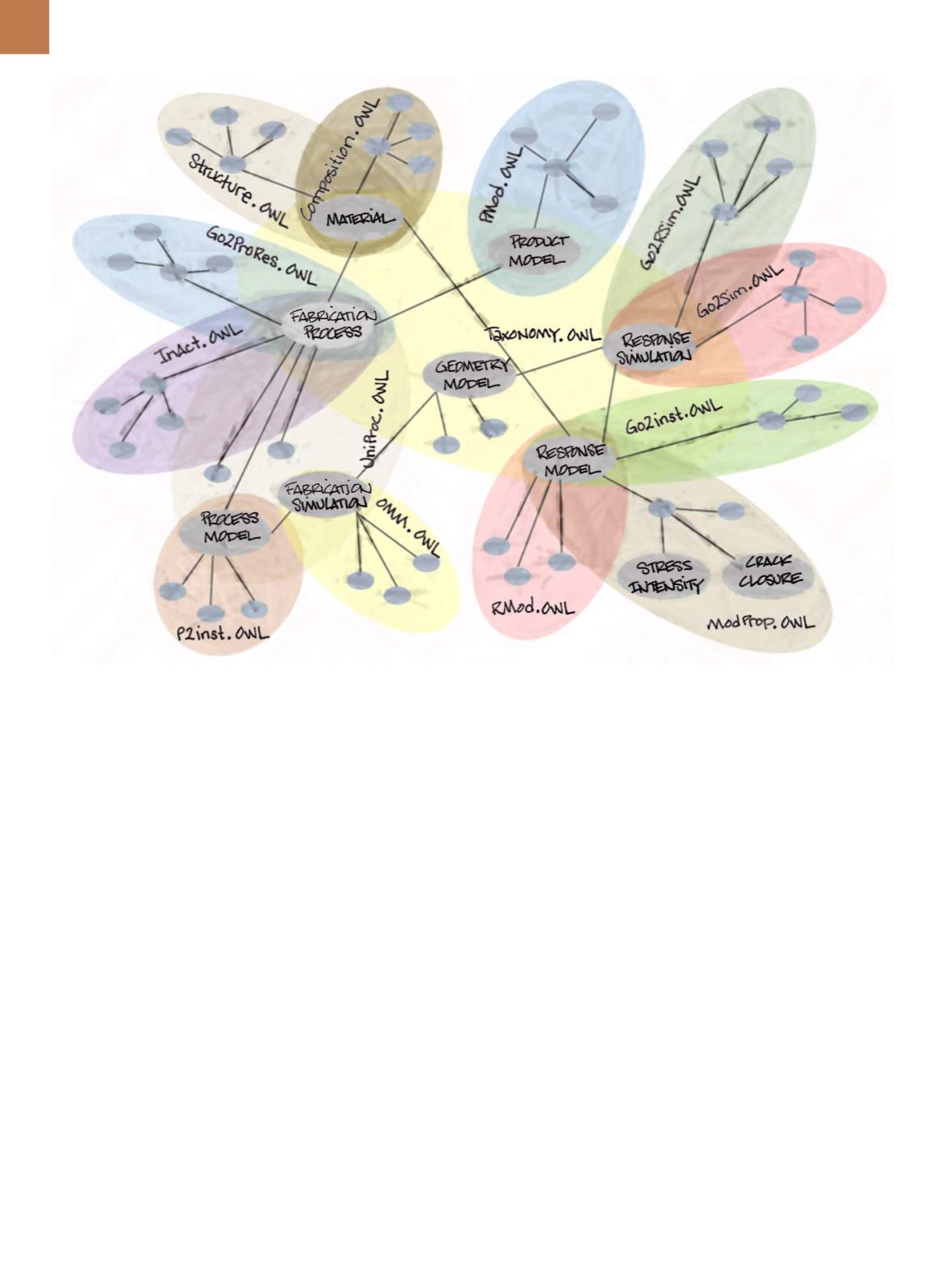

A D V A N C E D M A T E R I A L S & P R O C E S S E S | A P R I L 2 0 1 6
2 8
RDF expresses linked data on
the web as data triples—a directed,
labeled graph where discreet data el-
ements comprise “Subject, Predicate,
and Object.” This syntax provides a
machine-interpretable “sentence.” Giv-
en the pervasive use of the relational
database model (RDB), the W3C stan-
dard includes recommendations to map
relational data to RDF. One recommen-
dation is called “RDB to RDF Mapping
Language (R2RML)”
[11]
. Such mappings
provide the ability to view existing rela-
tional data in the RDF data model.
Figure 3 depicts connecting (merg-
ing) of RDF graphs via ontology. Data
in RDF that are linked to other RDF
data represent linked data, which
makes the web appear as one “giant
global graph.” Materials scientists and
engineers use the interplay between
composition, process, and structure to
create or modify materials to achieve
desired characteristics. Domain models
are created and implemented in soft-
ware to create simulations. Data from
characterization and simulation are as-
sessed to measure model performance
or further inform model development.
Elements that constitute the system to
achieve this are naturally linked, and
the linkage can be echoed using seman-
tic technologies.
Domain-specific linked data re-
quires common vocabularies. A com-
mon vocabulary is Dublin Core (DC)
ontology, a set of universally accepted
metadata used to describe a resource
(e.g., document). Developing and pub-
lishing common vocabulary using the
W3C RDFS/OWL specification is one of
the initial steps required to link relevant
materials information across dispa-
rate (federated) sources. Development
of common vocabularies for materi-
als has been jumpstarted by several
organizations including the National In-
stitute for Standards and Technologies
(NIST)
[12]
and University of Queensland
in Australia
[13]
. Collaborative efforts
with professional societies and other
organizations (e.g., ASM Internation-
al and ASTM terminology standards)
could accelerate vocabulary/ontology
development. Over time, Tuckman’s
group development model would
channel multiple vocabularies into key
sets of generally accepted terms and
mappings between terms having the
same meaning.
In information retrieval, keyword
searches generally return masses of
“hits,” requiring a method to assess
the usefulness of results, that is, how
accurate they are. Precision and recall
are two methods of measuring the rele-
vance of search results. Precision is the
qualitative fraction of retrieved instanc-
es considered relevant (i.e., of all results
Fig. 3 —
Depiction of connecting/merging of RDF graphs via ontology, making the web appear as one giant global graph.


















